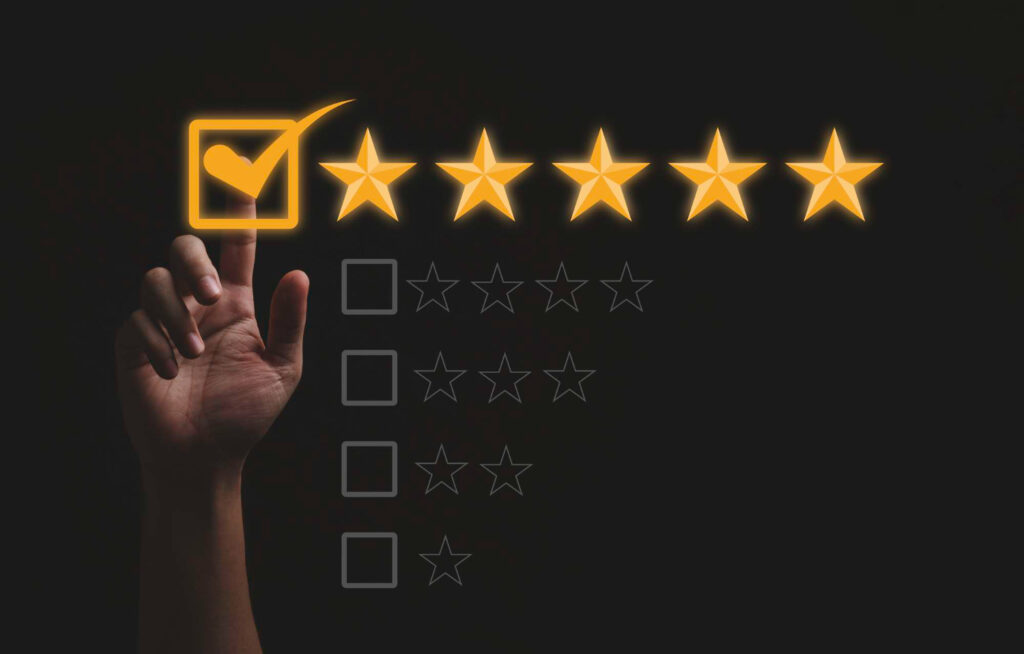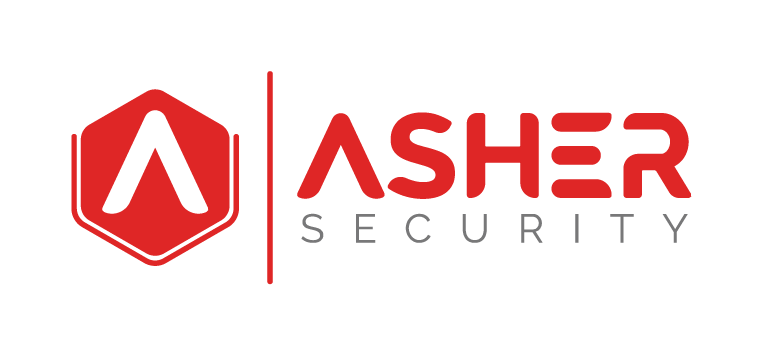In today’s interconnected world, where news spreads faster than ever, reputation management is everything. From multinational corporations to small businesses and even individuals, how others perceive you can profoundly impact your opportunities, relationships, and success.

But what is reputation management, and why does it matter so much?
A simple misstep—a poorly timed comment, an unfavorable review, or a single unresolved customer complaint—can snowball into a full-blown crisis. For businesses, this could mean losing customers, investors, or partners. For individuals, it might close doors to career advancements or personal relationships.
“It takes 20 years to build a reputation and five minutes to ruin it. If you think about that, you’ll do things differently.”
– Warren Buffett
However, there’s good news: reputation is not set in stone. With the right strategies, you can shape, protect, and enhance how others view you.
Reputation management isn’t just damage control. It’s a proactive, long-term commitment to building trust, showcasing authenticity, and creating meaningful connections. Whether you’re a brand looking to stand out in a crowded market or an individual seeking to leave a positive mark, mastering the art of reputation management is a game-changer.
Read on…
What is Reputation Management?

Reputation management is the strategic process of influencing, monitoring, and shaping how a business, individual, or organization is perceived by others. It refers to creating a favorable image for oneself or a name, brand, or company and managing how that image is portrayed in public. It is about making sure that the narrative about you that is out there tells your intended message about your values, goals, and promises you hold.
Reputation management comprises several steps such as; knowing what is being said on the internet, responding to negative content, and finally augmenting positively tagged content. It is not only about defending against negative feedback but also relates to creating a positive image.
The Building Blocks of Reputation Management
Monitoring Public Perception:
Staying informed about what’s being said on social media, review platforms, and news outlets is crucial. Tools like Google Alerts or sentiment analysis software can help track mentions and gauge public opinion.
Influencing Opinions:
This involves crafting and sharing positive narratives, such as success stories, testimonials, or content showcasing your values. It’s about leveraging your communication channels—like blogs, social media, or press releases—to highlight what makes you or your brand unique.
Responding to Feedback:
Some of the comments will not be favorable. By responding to concerns or criticism with courtesy and honesty, a business can easily change a disgruntled customer to one who is a fan. It also shows that the researcher is answerable and concerned.
Repairing Damaged Reputations:
There is no way of handling crises such as social media backlash or even a mistake made in a company or organization, other than identifying a timely and tactical mechanism of regaining credibility. This usually involves talking about failures, proposing changes, and letting stakeholders realize that you are determined to make changes.
Why is Reputation Management Important?
 Reputation is more than just a reflection of how others view you; it’s the foundation of trust, credibility, and success. In today’s hyper-connected world, where opinions spread instantly and customers have countless choices, reputation management has become essential for businesses and individuals alike. But why exactly is it so critical? Let’s explore.
Reputation is more than just a reflection of how others view you; it’s the foundation of trust, credibility, and success. In today’s hyper-connected world, where opinions spread instantly and customers have countless choices, reputation management has become essential for businesses and individuals alike. But why exactly is it so critical? Let’s explore.
- Developing Trust and believability
In our case, trust acts as the central common denominator for any relationship whether with its customer base, employees, or business partners. Individuals prefer to interact with brands or other subjects with whom they have positive associations that indicate credibility. Research shows that 70% of people often and increasingly use online reviews to inform their decision and the majority of customers consider online reviews as credible as word of mouth.
For the companies, this suggests that they need to counteract with negative comments, boasting over positive remarks, and be open with the clients. With, people, it is more about creating a business persona and making sure that the persona one has online fits with the purpose.
- Risk Management: Protection from Reputation Risks
In this computerized world, reputation risks are inevitable. From a single comment on Google that a restaurant’s food was awful to a tweet about a terrible experience and poor-quality service, a reputation can be ruined in the blink of an eye. Failure to work against these risks may lead to loss-making, damaged credibility, and in extreme cases legal repercussions.
It thus identifies and corrects these problems before they create the aforementioned risks. For example, risk assessment scoring enables a firm to determine the damage that a particular scenario could have on it so that preventive measures are taken.
- Enhancing Brand Visibility
This is especially because a positive reputation leads stakeholders to increase its visibility, in this case through the use of the internet. To the search engines, the companies with positive feedback, interacting with their page, and managing it properly, are considered the best. This means more listings on search engines, more visitors to the website, and more chances to sell to prospective consumers.
- Increasing Customer Loyalty and Revenue
Each customer wants their money’s worth and will stick to the brands they know and trust. A good image makes clients come back and makes the organizations charge higher prices from their customers. For instance, a McKinsey study found that slight increases in star ratings can boost product growth by 30% to 200%, depending on the category.
To companies that engage in vendor risk management, checking on your partners to make sure that they are above clean also instils more confidence in clients and helps in eradicating some of the problems that come with third-party dealings.
- Attracting Top Talent
Reputation is as important as compensation hence laying down the foundation of organizational behavior in the job market. Some 75% of the candidates say they would not accept a job with a company that has a poor image even if they were to be paid more. This has the strength of creating and maintaining a positive brand image that attracts and maintains trained employees which gives the business a competitive advantage.
Click here to read more on The Importance of Cybersecurity Training for Executives
- Crisis Resilience
Sometimes organizations hit the rocks, or they make mistakes and practically any organization can find itself in a crisis; it is what you do in such situations that can either make or break your organization. It is thus critical for any company’s communication plan to feature quick responses, transparency, and accountability during a crisis, to recover better. Consider it your last line of defense for when things turn bad and you need to lock down your reputation.
- Supporting Business Growth Through Vendor Management
A good reputation for organizations also applies to the operations of the organizations through contracts with third-party vendors. Vendor risk management and third-party risk assessment help identify that the businesses working with others meet the company’s norms to guarantee its reliability-oriented collaborators.
- Long-Term Sustainability
The reputation cannot be gained in one day. Thus, any change and engagement that happens at the organizational level is the culminating effect of a series of activities, honesty in conveying messages, and effectiveness in involving stakeholders. It defines how businesses and individuals should be protected from adverse events and be positioned for long-term sustainability.
From earning trust and visibility to adaptability and sales, reputation management is the essential foundation of achievements in the present world. Refusing to engage with it, then, is not merely losing out on something but keeping one step away from what everyone should avoid.
Top Tools and Strategies for Reputation Management
Managing an organization’s reputation involves asset management and techniques that can help monitor, engage, and influence the general public. In such a flow of so many platforms, reviews, and conversations it is crucial to use automation and think ahead. Let’s explore the most effective tools and actionable strategies to maintain a positive image.
1. Essential Reputation Management Tools
Investing in tools designed for reputation management can save time and ensure consistent results. Here’s a breakdown of some of the best tools available:
Tool |
Key Features |
Best For |
| Sprout Social | Social listening, sentiment analysis, review management | Social media-focused reputation efforts |
| Hootsuite | Content scheduling, monitoring mentions, reporting | Multi-platform engagement |
| Birdeye | Automated review requests, AI sentiment analysis | Small-to-medium businesses |
| Yext | Listings management, centralized review responses | Local businesses |
| Qualtrics | Surveys, customer insights, predictive analytics | Data-driven organizations |
Each of these tools addresses a specific aspect of reputation management, from monitoring reviews to engaging with customers in real time. Choose one that aligns with your needs and budget.
2. Strategies for Proactive Reputation Management
Develop a Comprehensive Content Strategy
The quality content strategy demonstrates and forms an understanding of your competency apart from your competitors.
- What to focus on: Posts, videos, graphics, and, testimonials.
- Frequency: Consistency is key. Update frequently to make sure your audience thinks of you first in case of need.
- Tone: Do not lose the authentic and credible image to find common interest with the readers.
Prioritize Online Review Management
Most people first encounter reviews when they are researching your business.
- Ask satisfied customers to write their reviews with references to such sites as Google or Yelp.
- Always acknowledge negative feedback, and explain to customers that your business is dedicated to enhancement.
Leverage social media for Engagement
Social media is where people discuss your brand at a given point in the day.
- You should engage social listening applications to track mentions and sentiment.
- Reply to the comment section comments, questions, and complaints as soon as possible.
- Forward any UGC with positive interaction that one comes across so that your followers can also see it.
Conduct Regular Risk Assessments
Risk assessment is crucial to avoid damaging the company’s image.
Risk assessment scoring: Risk is numerical quantifying where different risks are given an air of importance to aid in response efforts and the talks going around on social media, for instance, require automation and or planning.
The Cybersecurity Risk Assessment Funnel: A 4-Step Strategy for Smarter Security
Review partnerships to ensure third-party risk is minimized.
3. Responding to Crises Effectively
When crises occur, swift and thoughtful action is crucial.
- Stay transparent: Own up to mistakes and communicate steps being taken to address them.
- Provide updates: For instance, inform the stakeholders via press release or their social media platforms about the progress made so far.
- Show empathy: We should note their worries and where possible provide the relevant solutions to their worries.
For example, if a tech company is hacked and their customer, their database is compromised then, an announcement of the breach, free credit monitoring for the customers, and explaining what steps will be taken in the future to prevent such an attack can help regain the trust.
4. Build Brand Advocacy
Harness the power of your loyal customers and employees to amplify your reputation.
- Identify advocates who are enthusiastic about your brand.
- Offer incentives like exclusive content, discounts, or recognition.
- Create shareable content to make it easy for them to promote you organically.
5. Use Competitive Analysis to Stay Ahead
Knowing how your competitors manage their reputation can provide valuable insights.
- Use tools like Sprout Social or Qualtrics for side-by-side comparisons.
- Analyze competitors’ strengths and weaknesses to refine your strategy.
6. Stay Ahead with Trend Monitoring
Stay informed about industry trends and emerging topics relevant to your audience.
- Use social listening to identify positive associations or potential risks.
- Position your brand as a thought leader by sharing insights on trending issues.
Integrating Vendor Scorecards for Effective Reputation Management
A vendor scorecard refers to a strategic plan that enables an organization to monitor the behavior, level of adherence to specifications, and reliability of the third-party providers. Measures like quality, delivery time and security measures, and the risk score that the suppliers pose to the organization’s business goals and image can all be made sure through metrics assessment.
For example, a robust vendor scorecard system can help identify vendors who pose reputation risks, such as those failing to meet data security or regulatory requirements.
Why Vendor Scorecards Are Crucial for Reputation Management
- Mitigating Reputation Risks
Vendors often have access to sensitive company information or customer data. A breach or compliance failure on their part can severely harm your reputation. Regular assessments using vendor scorecards ensure your vendors adhere to strict standards, minimizing third-party risk. - Enhancing Vendor Accountability
Vendor scorecards provide a transparent method of tracking performance and highlighting areas needing improvement. This accountability fosters stronger partnerships and reduces risks associated with underperformance or ethical lapses. - Aligning With Customer Expectations
Customers expect businesses to work with trustworthy and responsible vendors. By incorporating vendor scorecards, companies demonstrate their commitment to ethical practices and secure operations, reinforcing their brand’s reliability.
How to Use Vendor Scorecards Effectively
Step |
Action |
| Define Key Metrics | Identify critical factors like compliance, financial stability, and security. |
| Assign Scores | Use a numerical or qualitative system to rate vendor performance. |
| Regular Evaluations | Schedule frequent assessments to ensure continuous improvement. |
| Communicate Results | Share findings with vendors to encourage collaboration and remediation. |
| Integrate With Risk Scoring | Combine vendor scorecards with risk assessment scoring tools to prioritize efforts effectively. |
Using Vendor Scorecards in Crisis Reputation Management
During a crisis involving a vendor, a well-maintained scorecard allows for quick decision-making. It helps identify high-risk vendors and ensures transparency in addressing the situation. This approach not only resolves immediate issues but also reassures stakeholders about your commitment to maintaining trust and accountability.
Vendor scorecards are not strictly a “tool” for reputation management but are a strategic tool used within broader risk and performance management frameworks. They indirectly contribute to reputation management by ensuring that vendors or third-party partners meet expected standards for compliance, performance, and security.
Here’s how they tie into reputation management:
- Minimizing Reputation Risk: Poor vendor performance or non-compliance can damage your reputation. Vendor scorecards help you identify and mitigate these risks.
- Promoting Accountability: By evaluating vendors consistently, you ensure they align with your values, reducing the chance of reputation-damaging incidents.
- Supporting Transparency: Clear tracking and communication of vendor performance enhance your credibility with stakeholders, showing a commitment to quality and ethical practices.
While vendor scorecards aren’t dedicated tools like Sprout Social or Yext, they’re a vital part of a vendor risk management program, which plays a role in safeguarding and enhancing reputation.
Conclusion: The Power of Reputation Management
When it comes to business, reputation management is not a trend but a necessity that shouldn’t be underestimated to prevent potential further losses. When people can write anything on the Internet, post negative comments on a social networking site, or have any unflattering thing said about them, control of the story’s message is critical.
Essentially, while managing reputation is about solving problems, it is even more significant for developing opportunities, whether one is a business looking to expand in increasingly saturated markets, or an individual looking to establish their brand. A POSITIVE REPUTATION IS THE KEY TO EFFECTIVE MARKETING, CREATING CONFIDENCE IN YOUR BUSINESS, AND CREATING LONG-LASTING RELATIONSHIP.
Through monitoring feedback, engaging with the audiences, engaging reputation management tools, and ensuring that you are ethical with your partner vendors, you have the opportunity to grow. It’s not about aiming to be the best; it is about being real, listening, and committed to development.
While new and advanced levels of reputation risks arise and places for reputation building appear, it will help to be ready for challenges and to develop new opportunities when you have developed a clearly defined robust reputation management system.
After all, your reputation is not what others say about you – it is or should be your most treasured asset.
Subscribe To Our Newsletter For More
Recent Comments